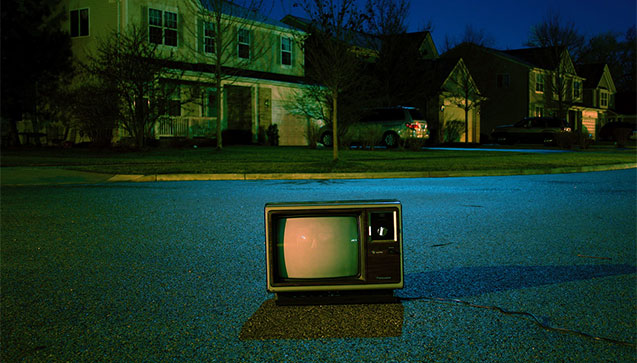Looking to bag that all-important, potentially career-changing sync in TV or film? Not sure how to get started? Well, look no further...
We were on the ground at PRS for Music’s recent How To Place Your Music in TV and Film event, which took place at the iconic Band on the Wall in Manchester, to gain some precious insight.
Check out what we learned from the panel of experts including Sentric Music’s Patrick Cloherty, Rachel Wood from Woodwork Music, freelance music supervisor and lecturer Danny Champion and PRS for Music’s Dave Newton...
Make your tracks as easy to clear as possible
Patrick: You have a much better chance of having your music used if you make it as easy as possible for people to license. If you own 100 percent of your track on the publishing side and 100 percent on the master side you can effectively do it under one agreement.
Danny: There are a lot more opportunities for music out there than there has ever been, but there’s less money per-use. It might be easier to look for a few £1,000 placements than to try to land one £100,000 sync.
Patrick: I totally agree with that, especially with YouTube licences. For example, fashion brands are now doing one or two big campaigns a year that are actually broadcast campaigns, but they’re constantly releasing new products, so their YouTube channels are becoming a really good way for artists to get sync licences. They’re uploading regular videos to YouTube which might be £2-4,000 a pop. We get briefs in weekly for the same brands who are looking for content for their YouTube channels.
Build your profile
Rachel: If you’re in a band, all that promotion that you’re doing as an artist will help raise your profile, and if your profile is raised then somebody might find you. Supervisors don’t just get pitched to, they are music experts and part of their job is to find new music for their projects. If they’re looking for the kind of music you’re doing then they might find you if you have a profile out there. Your profile is going to be your biggest help in getting placements.
Go through a third-party agent
Rachel: In terms of getting tracks to supervisors specifically for sync, I think third-party agents, whether it’s a publisher, a strong sync team at a record label or it’s through someone like Woodwork, are really useful because music supervisors do not take pitches from people out of the blue. Having people who are trusted sources for the music supervisors is crucial.
Danny: It’s about trust, so if it’s unsolicited then they do tend to go to the bottom of the pile, there’s only so many hours in a day.
Know where your music fits
Rachel: If you’ve got limited time and resources, pitch to the people that are more likely to use you. Watch television, watch films, watch adverts, see what kind of brands are using the type of music you make.
Concentrate on writing the music
Patrick: Often artists will come to us and say ‘I’m interested in trying to get a sync, how can I do that?’ My advice is always: don’t start trying to change your music specifically to try and get a sync, as you can see through it a mile off. Concentrate on being a musician.
Have different versions and file types of your songs ready
Patrick: The best thing to do is to keep all of your music stored somewhere where you can send links that are readily available. You should have all of your audio available instantly. Have it as an MP3, a WAV, an AIF because supervisors will have different needs. Have as many versions of the track as you can, have an instrumental version, have a radio edit, if it’s got any swearing in it, get rid of that. Have it all good to go. Especially if you have a really catchy bit in the track, these are the kind of things people like to license. Get it done while you’re in the studio, it saves so much hassle.
Show your metadata some love
Patrick: Use iTunes, which is what most people tend to use for metadata. Right click the track and click ‘Get Info’, always add your contact details to the comment section. It’s even important for us to do when we’re sending out tracks to supervisors.
Sign up for Soundmouse if you write for TV or radio
Dave: At PRS, we are moving more and more into music recognition technology, and we’re using a company called Soundmouse to help us. Soundmouse takes the music that is reported to it, and match it against the actual music being played by radio and TV stations. It needs your audio files to make the match, then the technology will make sure that payments are being made correctly. It’s a free account you can set up and there’s a good Soundmouse help team on hand to help.
Danny: A company I worked for in London were looking into the data PRS was getting from advertising agencies. In the sample they looked at, about 25 percent of it was wrong. So royalties for 25 percent of the music advertising agencies were using were not being paid to the writers. And if you’re on an advert that’s getting 200 transmissions in a year, that’s a significant amount of money that you’re not getting because of the advertising agency not sending through the right data. So something like Soundmouse is very, very important.
If you get a sync deal, capitalise on it
Patrick: Something like Made in Chelsea is a good example of a sync deal you’re able to capitalise on. The actual money you could receive off a spot like that isn’t massive, but the PR side of it is really beneficial to artists and writers. They add tracks to curated Spotify playlists which they share on social media, and they’ve been the most ‘Shazamed’ TV show for the last four years running. We’ve seen artists streaming numbers on Spotify jump from 1,000 to a couple of million because that artist has jumped on the back of that placement and engaged with new fans straight away.
Words: Faye Ducker
We were on the ground at PRS for Music’s recent How To Place Your Music in TV and Film event, which took place at the iconic Band on the Wall in Manchester, to gain some precious insight.
Check out what we learned from the panel of experts including Sentric Music’s Patrick Cloherty, Rachel Wood from Woodwork Music, freelance music supervisor and lecturer Danny Champion and PRS for Music’s Dave Newton...
Make your tracks as easy to clear as possible
Patrick: You have a much better chance of having your music used if you make it as easy as possible for people to license. If you own 100 percent of your track on the publishing side and 100 percent on the master side you can effectively do it under one agreement.
Danny: There are a lot more opportunities for music out there than there has ever been, but there’s less money per-use. It might be easier to look for a few £1,000 placements than to try to land one £100,000 sync.
Patrick: I totally agree with that, especially with YouTube licences. For example, fashion brands are now doing one or two big campaigns a year that are actually broadcast campaigns, but they’re constantly releasing new products, so their YouTube channels are becoming a really good way for artists to get sync licences. They’re uploading regular videos to YouTube which might be £2-4,000 a pop. We get briefs in weekly for the same brands who are looking for content for their YouTube channels.
Build your profile
Rachel: If you’re in a band, all that promotion that you’re doing as an artist will help raise your profile, and if your profile is raised then somebody might find you. Supervisors don’t just get pitched to, they are music experts and part of their job is to find new music for their projects. If they’re looking for the kind of music you’re doing then they might find you if you have a profile out there. Your profile is going to be your biggest help in getting placements.
Go through a third-party agent
Rachel: In terms of getting tracks to supervisors specifically for sync, I think third-party agents, whether it’s a publisher, a strong sync team at a record label or it’s through someone like Woodwork, are really useful because music supervisors do not take pitches from people out of the blue. Having people who are trusted sources for the music supervisors is crucial.
Danny: It’s about trust, so if it’s unsolicited then they do tend to go to the bottom of the pile, there’s only so many hours in a day.
Know where your music fits
Rachel: If you’ve got limited time and resources, pitch to the people that are more likely to use you. Watch television, watch films, watch adverts, see what kind of brands are using the type of music you make.
Concentrate on writing the music
Patrick: Often artists will come to us and say ‘I’m interested in trying to get a sync, how can I do that?’ My advice is always: don’t start trying to change your music specifically to try and get a sync, as you can see through it a mile off. Concentrate on being a musician.
Have different versions and file types of your songs ready
Patrick: The best thing to do is to keep all of your music stored somewhere where you can send links that are readily available. You should have all of your audio available instantly. Have it as an MP3, a WAV, an AIF because supervisors will have different needs. Have as many versions of the track as you can, have an instrumental version, have a radio edit, if it’s got any swearing in it, get rid of that. Have it all good to go. Especially if you have a really catchy bit in the track, these are the kind of things people like to license. Get it done while you’re in the studio, it saves so much hassle.
Show your metadata some love
Patrick: Use iTunes, which is what most people tend to use for metadata. Right click the track and click ‘Get Info’, always add your contact details to the comment section. It’s even important for us to do when we’re sending out tracks to supervisors.
Sign up for Soundmouse if you write for TV or radio
Dave: At PRS, we are moving more and more into music recognition technology, and we’re using a company called Soundmouse to help us. Soundmouse takes the music that is reported to it, and match it against the actual music being played by radio and TV stations. It needs your audio files to make the match, then the technology will make sure that payments are being made correctly. It’s a free account you can set up and there’s a good Soundmouse help team on hand to help.
Danny: A company I worked for in London were looking into the data PRS was getting from advertising agencies. In the sample they looked at, about 25 percent of it was wrong. So royalties for 25 percent of the music advertising agencies were using were not being paid to the writers. And if you’re on an advert that’s getting 200 transmissions in a year, that’s a significant amount of money that you’re not getting because of the advertising agency not sending through the right data. So something like Soundmouse is very, very important.
If you get a sync deal, capitalise on it
Patrick: Something like Made in Chelsea is a good example of a sync deal you’re able to capitalise on. The actual money you could receive off a spot like that isn’t massive, but the PR side of it is really beneficial to artists and writers. They add tracks to curated Spotify playlists which they share on social media, and they’ve been the most ‘Shazamed’ TV show for the last four years running. We’ve seen artists streaming numbers on Spotify jump from 1,000 to a couple of million because that artist has jumped on the back of that placement and engaged with new fans straight away.
Words: Faye Ducker





